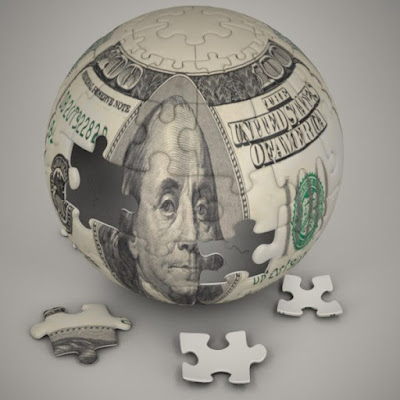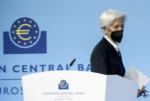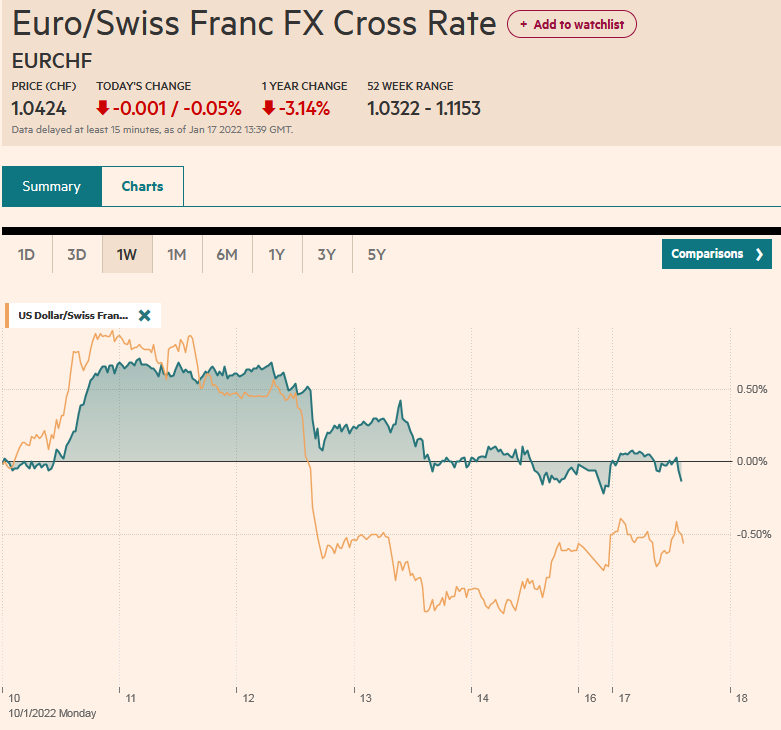Overview: The US dollar is bid against most currencies today, encouraged not just by good news in the US and poor news out of China, where Covid is flaring up and new social restrictions are fared, while Macau has been lockdown for a week. The energy crisis in Europe is fanning fears of a recession before the ECB lift rates above zero. Japanese markets bucked the global move and advanced, which it often does after the government wins an upper house election. The Hang Seng, where many Chinese tech companies are listed fell nearly 2.8% to lead the losses. Europe’s Stoxx 600 is snapping a three-day advance and is off almost 0.5% near midday. The S&P 500 futures are off about 0.6%, while the NASDAQ futures warn that the four-day rally is at risk. It is off around
Topics:
Marc Chandler considers the following as important: 4.) Marc to Market, 4) FX Trends, China, Currency Movement, ECB, Energy, Featured, Japan, newsletter, Recession, U.K., USD
This could be interesting, too:
Nachrichten Ticker - www.finanzen.ch writes Die Performance der Kryptowährungen in KW 9: Das hat sich bei Bitcoin, Ether & Co. getan
Nachrichten Ticker - www.finanzen.ch writes Wer verbirgt sich hinter der Ethereum-Technologie?
Martin Hartmann writes Eine Analyse nach den Lehren von Milton Friedman
Marc Chandler writes March 2025 Monthly
Overview: The US dollar is bid against most currencies today, encouraged not just by good news in the US and poor news out of China, where Covid is flaring up and new social restrictions are fared, while Macau has been lockdown for a week. The energy crisis in Europe is fanning fears of a recession before the ECB lift rates above zero. Japanese markets bucked the global move and advanced, which it often does after the government wins an upper house election. The Hang Seng, where many Chinese tech companies are listed fell nearly 2.8% to lead the losses. Europe’s Stoxx 600 is snapping a three-day advance and is off almost 0.5% near midday. The S&P 500 futures are off about 0.6%, while the NASDAQ futures warn that the four-day rally is at risk. It is off around 0.75%. The US 10-year yield is a little softer at 3.06%, while European benchmarks are 2-5 bp lower and peripheral premiums are edging wider. Gold is near last week’s low (~$1732). The next chart support may be nearer $1720. August WTI met sellers around $105. A break of the $10150 area could signal a test on last week’s lows by $95. US natgas has recouped the pre-weekend loss of about 4.2%. A heatwave is spreading across much of the west and Midwest. Europe’s benchmark is 1% lower but appears to be consolidating after rising 15.3% last week. Iron ore is off 2.7% after falling 1.5% last week. September copper has fallen for the past five weeks and is off another 1.8% today. September wheat rallied more than 10% in the past two session and is extending its gains another 1.7% today.
Asia Pacific
Japan's governing alliance increased its majority in the upper house of the Diet. Of the 125 seats that were at stake, the LDP and Komeito Party took 76 seats. They had 69 of these seats previously. Voter turnout was slightly higher than the last upper house election three years ago (~51.6% v 48.8%). Prime Minister Kishida, a protege of Abe, will stick with the traditional LDP policy thrust of easy monetary and fiscal policy. Kishida's contribution is recognizing the importance of distributional issues. He will also push ahead with a more activist defense policy, and military spending will rise. LDP leaders have long advocated changing the pacifist constitution but also moved cautiously. The rise of China is giving more impetus to it now.
China's inflation report over the weekend had a little bit of everything. The CPI accelerated to 2.5% in June from 2.1% in May. It was slightly above the median forecast in Reuters and Dow Jones surveys. Month-over-month, China's CPI was flat after having fallen by 0.2% previously. Food and energy are the main drivers; without them, China's CPI was 1% year-over-year. Gasoline and vehicle fuel prices were up nearly 33% over the past year. Food prices rose 2.9% (from 2.1%), and the risk is on the upside as pork prices are rebounding. On the other hand, producer price inflation slowed to 6.1% from 6.4% in May. It was the eighth consecutive monthly deceleration and is at its slowest pace in 15 months.
China's inflation news was overshadowed by other developments. Alibaba and Tencent were hit with regulatory fines. Bondholders in Evergrande's onshore entity (Hengda Real Estate) rejected a proposal for another extension of its debt payment. Also, a flare up of Covid has led to a weeklong shut down of Macau and Shanghai reported the most cases since late May. The CSI 300 snapped a five-week 11.5% rally last week with 0.85% loss. It fell by about 1.65% today, its largest loss in almost two months. Separately, after the mainland markets closed, China reported stronger than expected June lending figures. Aggregate financing jumped to CNY5.17 trillion in June, up from CNY2.79 trillion in May. The record was set in January (~CNY6.18 trillion)
The dollar rose to new 22-year highs against the Japanese yen, slightly above JPY137.25. Initial support now is in the JPY136.50-JPY136.70 area. It had been consolidating this month after reaching JPY137.00 on June 29. The yen's weakness is in line with the euro and sterling today, where the cross rates are little changed. The Australian dollar gained around 1.1% over the past two sessions but is giving a chunk of it back today (~-0.7%). The roughly A$420 mln expiring option at $0.6825 may be back in play. The Aussie is holding just inside the pre-weekend range when a low of almost $0.6790 was recorded. It looks to be finding support in the European morning but needs to resurface above $0.6725 to stabilize the tone. The greenback edged higher against the Chinese yuan, but for the fourth-consecutive session it remained within the range set on July 5 (~CNY6.6845-CNY6.7235). Today's dollar fix was tight to expectations (CNY6.6960 vs. CNY6.6965).
Europe
Greece's central bank governor is on to something. In a weekend interview, Stournaras recognized that the need for a new tool to combat fragmentation grows out of the absence of EU reforms, with an incomplete economic and monetary union. Indeed, the current debate over the "Transmission Protection Mechanism" seems to offer more proof that the common EU bonds during the pandemic were the game-changer that some argued. They could ultimately prove to be scaffolding for a new fiscal framework, but they could also prove to be a Potemkin exercise.
There seems to be two other talking points today in addition to next week's ECB meeting. First, the contest to replace Johnson as UK Prime Minister has intensified with nearly a dozen candidates declaring. The timetable for the leadership context is expected to be announced later today. The ostensible goal it to get it down to two candidates before Parliament's summer recess in ten days. Second, is the energy crisis in Europe. A key pipeline (Nord Stream) for Russian gas to Europe is down for regular maintenance for ten days starting today. This is on top of the 30-day stoppage orders by Russian courts last week of a key conduit at a Black Sea port for Kazakhstan oil. Separately, but related, power prices in German surged today to the highest level in four months as weak winds made for weak power generation. Canada's announcement that it would return a turbine for the Nord Stream pipeline, a source of tension with Moscow, helped ease natural gas prices. The heatwave in parts of Europe, including Germany and Italy is boosting the demand for electricity. Some rationing is being reported.
After recording new 20-year lows near $1.0070 ahead of the weekend, the euro recovered and traded to almost $1.02. It has come back offered today and fell to almost $1.01. The risk of a recession, while such fears in the US may have eased a little after the composite PMI was revised higher and the jobs report before the weekend was stronger than expected. Initial resistance is now seen near $1.0140. Many have their sights set on parity. Sterling is also trading heavily within the pre-weekend range (~$1.1920-$1.2055). A two-year low was recorded last week near $1.1875. A close above $1.20 would be constructive.
America
The US quarterly refunding kicks off today with the sale of $43 bln three-year notes. Tomorrow, Treasury will sell $33 bln 10-year notes, followed by $19 bln of 30-year bonds on Wednesday. Under its balance sheet roll-off operations, the Federal Reserve will allow $30 bln of Treasuries to drop off this month and next before increasing to $60 bln starting in September. Some estimate that the Fed may buy $5-$6 bln of the three-year note.
A late-June poll by CivicScience cited by Bloomberg found that 35% of Americans thought the US was already in recession, and another 36% thought it would be by the end of the year. An Economist/YouGov poll in the middle of June found that 56% believe the US is in a recession and another 22% are unsure. That left 22% who did not think a recession had begun. Partisanship is an important consideration. The poll found that 70% of those identified as Republicans believed the US has entered a recession compared with 45% of Democrats.
Although Canada's employment report before the weekend was disappointing, the market continues to expect the Bank of Canada to deliver a 75 bp hike when it meets on Wednesday. Canada job growth in the past two months is negligible, but what is happening is that part-time jobs are being replaced with fulltime positions. The former has fallen by 135k while the latter increased by 131k. The swaps market has 75 bp fully discounted for this week and is nearly evenly divided between 50 bp and 75 bp for the next meeting on September 7.
The two-day recovery in the Canadian dollar is being challenged today amid the risk-off mood. The US dollar's pullback found support ahead of the weekend and earlier today near the 20-day moving average (~CAD1.2940) and the (61.8%) retracement of the leg up that began on July 4 near CAD1.2840. Between tomorrow and Wednesday, there are options for $1.7 bln at CAD1.30. Last week's CAD1.3085 was the highest the greenback has been since November 2020. The US dollar is bid against the Mexican peso and briefly edged above the pre-weekend high near MXN20.5880. Last week's high was near MXN20.7860, its highest level in almost four months. Initial support is seen around MXN20.45.
Tags: #USD,China,Currency Movement,ECB,Energy,Featured,Japan,newsletter,recession,U.K.








